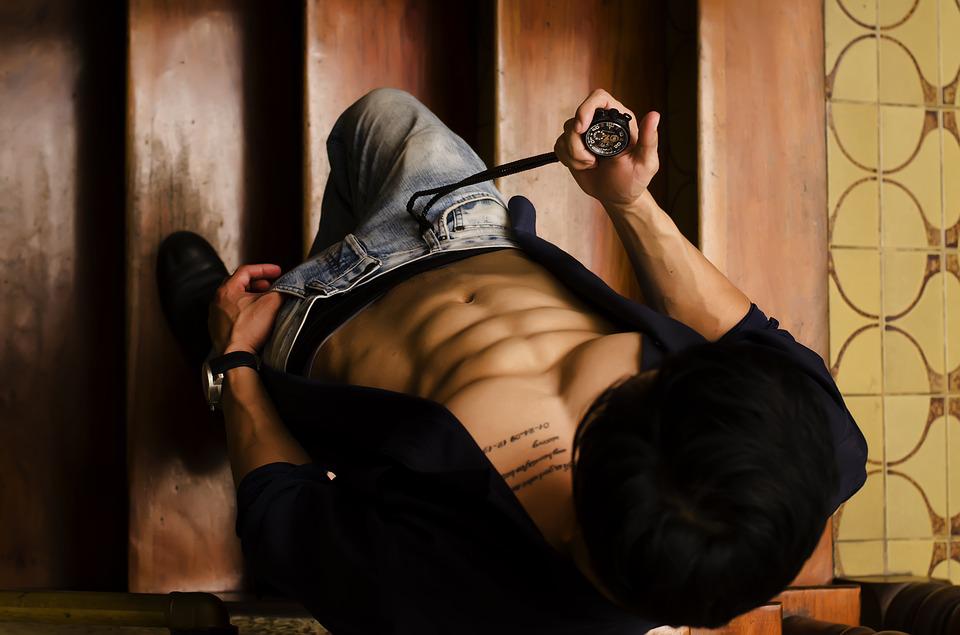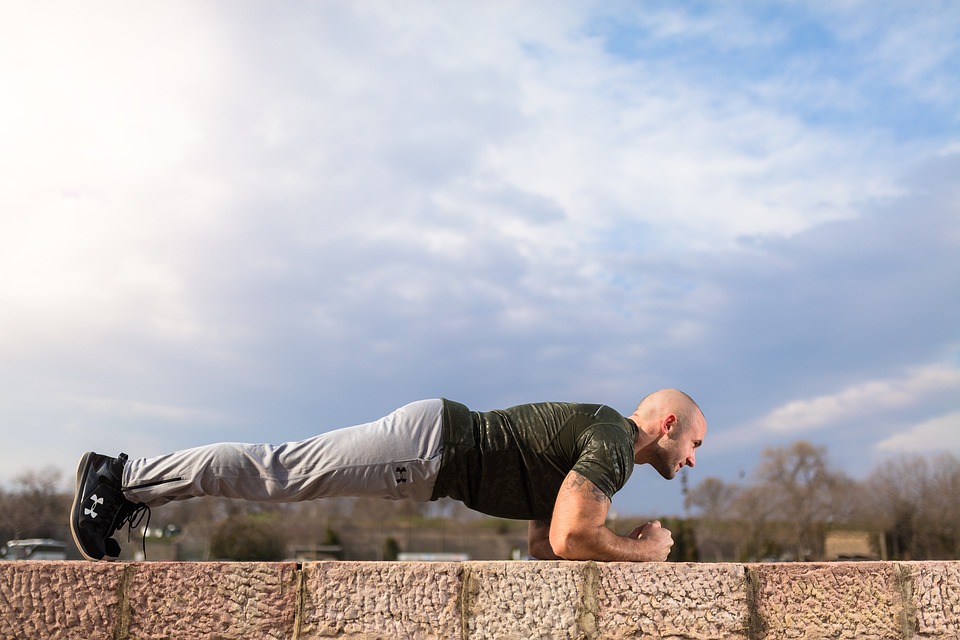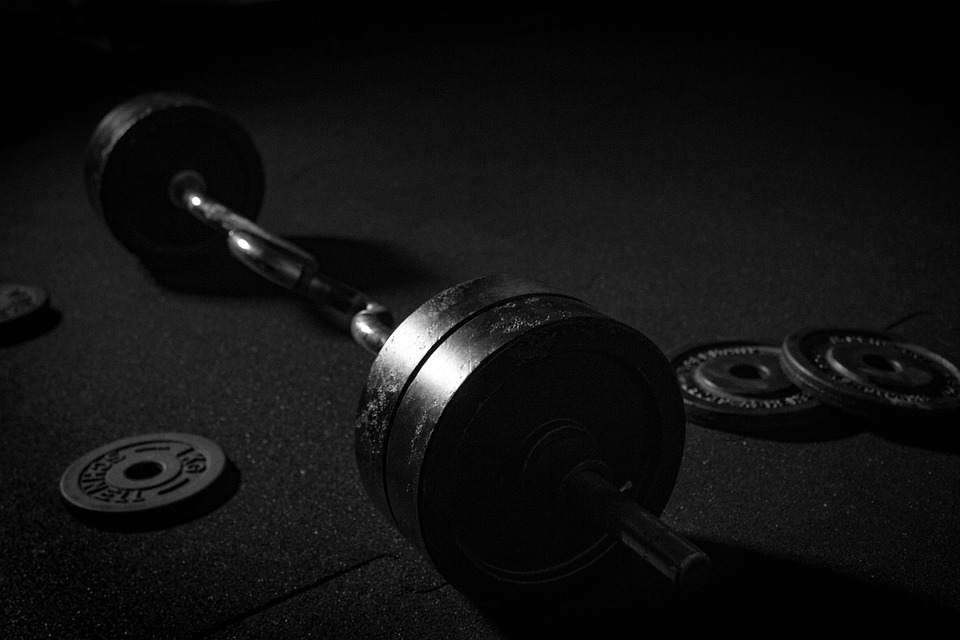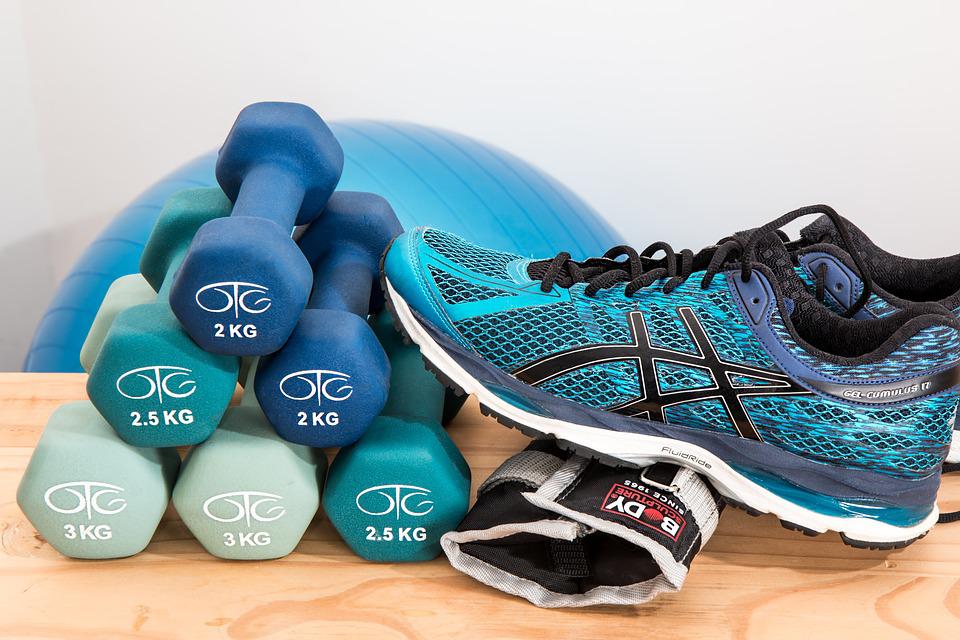
While you can’t lose fat in one particular area, you can use exercise to help reduce fat overall.
Studies have found that working out a muscle does cause an increase in blood flow and lipolysis in that area. However, the effect is very small and does not have a significant impact. This means that while exercising your muscles can help them to grow and become more defined, it will not directly reduce the amount of fat covering them.
Spot reduction is a myth.
If you are not happy with how your six-pack looks, it may be because you have underdeveloped ab muscles.
Many people try to fix the problem of a weak core by doing a lot of different abdominal exercises, but this approach is not effective.
In fact, the best exercises for training your abs (as well as every other muscle group) are exercises that work multiple muscle groups at the same time, like the squat, deadlift, bench, and overhead press.
The average barbell back squat activates the rectus abdominis and external oblique muscles just as effectively as the weighted plank, but the erector spinae muscles are activated significantly more.
While it is true that abdominal workouts shouldn’t be ignored, they shouldn’t be given more importance than other exercises such as squats and deadlifts.
If you want to train your abs, you should do a lot of heavy, compound weightlifting, along with a few ab exercises. Once you’ve been doing this for a while, you probably won’t need to do ab exercises anymore.
The 18 Best Core Exercises
Sit-up
Place your feet flat on the floor with your toes under something heavy. Bend your knees and cross your arms over your chest or rest your hands on the back of your head.
Bend your torso towards your knees until your back is at a 90-degree angle with the ground, then return to the original position.
If you are new to this exercise, shoot for 10 repetitions per set. Once you are able to do 30 repetitions per set, you can either continue doing more repetitions per set or switch to a more difficult ab exercise, like weighted sit-ups.
Russian Kettlebell Challenge (RKC) Plank
Position yourself on the ground on your stomach, with your feet out behind you and your elbows resting on the floor, as if you were reading a book. Your elbows should be positioned under your shoulders, and your forearms should be resting on the floor.
Brace your core, squeeze your glutes, and press your toes into the floor to lift your hips off the ground. Keep your body rigid and in a straight line so that your back doesn’t dip down or lift up.
The RKC Plank is a variation of the regular plank where you contract your core muscles as hard as you can while trying to pull your elbows towards your toes without bending your back, hips, or knees.
Start by holding this position for 30 seconds and try to increase your time each time you do this exercise. If you can manage to hold it for 90 seconds, then either try to hold it for longer or switch to a more difficult exercise.
Tuck and Crunch
To begin, lie on your back with both hands placed against your temples. Next, raise both legs off the ground while bending your knees to a 90 degree angle so that your shins are now parallel with the ground. Next, flex your abs and raise your torso off the ground while moving your elbows towards your knees until you can no longer move your torso any further. Finally, reverse the entiremotion to return back to the starting position.
If you have never done this exercise before, your goal should be to do 20 reps per set. Once you can do 30 reps per set, make the exercise more difficult by bringing your knees toward your elbows when you crunch and straightening your legs when you lean back. When doing this variation, always keep your feet and shoulders a few inches off the ground.
Boat Pose
Sit down on your bum with your knees bent, your feet on the floor, and your hands on the ground at your sides. Without bending your back, lean backward, lift your feet off the ground, straighten your legs, and push your arms straight out in front of you, all at the same time. Your body should look like a “V” from the side.
The goal is to hold this position for 30 seconds.
Switch to a more difficult ab exercise after being able to hold the previous position for 2 minutes.
Toes-to-Bar
Put your hands on a pull up bar, palms away from you. Flexing your abs, lift your legs until your toes touch the bar, keeping your body from swinging. A slight bend in the knees is fine.
Reverse the movement to return to the starting position.
Try to do 10 repetitions per set to start, and gradually increase until you can do sets of 20 repetitions. Once you can do 20 repetitions per set, make them slower to make them more challenging. Once you can do 3 sets of 20 slow repetitions, add more repetitions or try a different abdominal exercise.
Captain’s Chair Leg Raise
Sit in a captain’s chair with your back against the back pad and your arms on the arm rests. Grab the handles and let your feet dangle straight down.
Repeat this movement 10 times. To begin, flex your abs and lift your legs up in an arc until your thighs are parallel to the ground. There is no need to worry about keeping your legs perfectly straight, as a slight bend in the knees is acceptable. Once you have reached the desired position, reverse the movement to return to the starting position. This movement should be repeated 10 times.
Start with 15 repetitions per set without added weight. Once you are able to do 30 repetitions per set, add a 5-pound dumbbell and hold it between your feet. Once you can do 30 repetitions with the 5-pound dumbbell, increase the weight by 5 or 10 pounds and work up to 30 repetitions with that weight. Continue progressing in this manner until the dumbbell starts slipping out from between your feet. At that point, switch to a different ab exercise like the hanging leg raise.
Air Bicycle
Lie on your back with your hands resting against your temples. Bend your knees to 90 degrees and raise your legs off the ground, so your shins are parallel with the ground. Flex your abs and lift your torso a few inches off the floor.
Bring your right leg up to a couple of inches off the floor and twist your torso so your right elbow touches your left knee. Then bring your leg back to the starting position and do the same thing with your left leg.
Do the exercise for as long as you can, alternating sides. Try to do the exercise for 30 seconds per set, but try to increase the time every time you do it. Once you can do the exercise for 90 seconds for 3 sets, try a different exercise.
L-Sit on Push-up Handles
You can put your feet on a towel or pair of socks for more stability. Find a push-up bar and position yourself so that your legs are straight and you are between the bars. Grasp the bars and raise your body off the ground, keeping your elbows locked. Raise your feet off the ground so that your body forms an “L” shape, with your legs at a 90 degree angle to your torso. You may want to put your feet on a towel or pair of socks for more stability.
You should aim to hold the position for 30 seconds per set to start. Once you are able to hold the position for 90 seconds, you can make the exercise more difficult by lifting your feet higher, so that your body is in more of a “V” shape. Work up from 30-second to 90-second holds.
Once you can improve your V-Sit by holding it for 90 seconds, you can then further increase the difficulty by alternating between an L-Sit and a V-Sit every 20 seconds, without touching the floor.
Dumbbell Sit-up on Bench
To start this exercise, sit on a bench with your lower legs secured between the rollers. If you haven’t done this before, begin by using the bench on its lowest setting. Hold a weight against your chest that would allow you to do around 10-20 reps per set.
Start by doing 20 reps per set with a certain weight, and then make the exercise more difficult by gradually increasing the angle of the bench until it is at the steepest setting.
Start with the heaviest weight you can lift for 20 reps at the steepest angle. Add 5 to 10 pounds and work up to 20 reps with that weight. Double the weight and reps in this manner.
Make sure the weight is high on your chest and your back is not flexed too much. This will shorten the range of motion and make the exercise easier and less effective.
Hollow Body Hold
Gymnasts learn the hollow-body hold on the first day of training.
This position involves using your abs to create tension throughout your body and is important for many other movements in the sport.
The hollow body hold can be beneficial for people who are not gymnasts. It can teach you how to engage your core muscles, which can help you get more out of other exercises that work the core.
Dead Bug
Dead bugs look easy.
The text is saying that if the exercises feel easy, then you are probably not doing them correctly.
keep your back pressed flat against the ground throughout the entire movement, accomplished by keeping your core tight (as if you were doing a hollow body hold). Move slowly and under control.
Bird Dog
The bird dog helps you do two important things:
- Improve your balance.
- Develop the muscles on the ‘back’ of your core (i.e. your posterior chain).
This second point is especially important. Training only the front muscles of your core can cause problems like lower-back pain.
Superman (aka Back Extension)
It’s a challenging movement so make sure you’re nice and warmed up before you try it. This is another bodyweight exercise that is great for the posterior chain. The posterior chain are the muscles on the ‘back’ of your core. It’s a challenging movement, so make sure you’re nice and warmed up before you try it.
Simultaneously squeezing your glutes and shoulder blades will help take pressure off your lower back.
Reverse Crunch
Crunches are a type of exercise that helps improve your posture. The opposite of regular crunches are lying on your back with your knees bent and your feet flat on the ground.
They may be easier than some other exercises, but they are still challenging and shouldn’t be underestimated. If you’ve never done them before, you will likely experience some soreness.
Keeping your core tight during this exercise is important (tense it as if somebody was going to punch you in the stomach).
Suitcase Carry or Hold
This is a personal favorite of mine.
Pick up a heavy object in one hand and hold it until your grip gives out.
The most important thing to remember when doing this exercise is to keep your weight balanced so you don’t lean over to one side. To get the most out of this exercise, stand up tall with your chest up and your shoulder blades back and down, and avoid leaning as much as possible.
Suspension Trainer Body Saw
Body saws are a twisted and sadistic version of a plank.
This is an difficult exercise, so if you’re new to training your core, I suggest you start with an easier exercise on this list.
Although it may be difficult, the exercise is worthwhile. Be sure to keep your core muscles engaged and maintain control over the movement at all times.
Hanging Leg-Raise
You will need to find something to hold on to in order to do hanging leg-raises.
If you want to do hanging leg raises as part of a workout that also includes other exercises that require a bar, a playground would be the ideal place to do them. However, if you can’t find a playground, don’t worry about it. Do some of the other exercises on this list and save the hanging leg raises for next time.
Relatively simple-looking though they may be, these exercises are tough.
If you are finding the exercise difficult, start by bending your leg and bringing your knee up to your chest.
Ab Wheel Rollout or Suspension Trainer Fallout
Ab wheel rollouts are thought to be very effective for working the core muscles.
Although the name suggests you need an ab wheel, you can also use a suspension trainer if you don’t have one.
Suspension trainers can be used to do fallouts, which work your core in a similar way to an ab wheel.
Auspension trainers are easy to adjust the difficulty of the exercise. If you stand close to upright it will be fairly easy, but if you lengthen the straps and lower yourself closer to the ground it will be much tougher.














